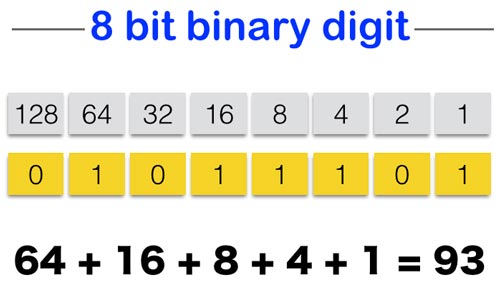Binary code is simply a string of 0’s and 1’s. The number of ‘bits’ represent the number of possible slots for the 0’s or the 1’s. For instance, 3 bit binary code could look like 001, 4 bit 0101, and so on. Each digit in the code links to a set value determined by, starting from right and moving to the left, taking the number 1 and then doubling as you move along to the next slot (1, 2, 4, 8, 16, and so on). You then add all those values with one attached to them to get the final number. Below is an example of 8 bit binary code.
You may have noticed that with 8 digit binary code the largest number you can make is 255 with 11111111. That’s 128 + 64 + 32 + 16 + 8 + 4 + 2 + 1 = 255. With zero being the lowest value, you have a possible range of 0-255 giving 256 possible values.
Alternatively, with each digit being either 0 or 1, 8 digits gives you 2⁸ = 256 possible combinations.
